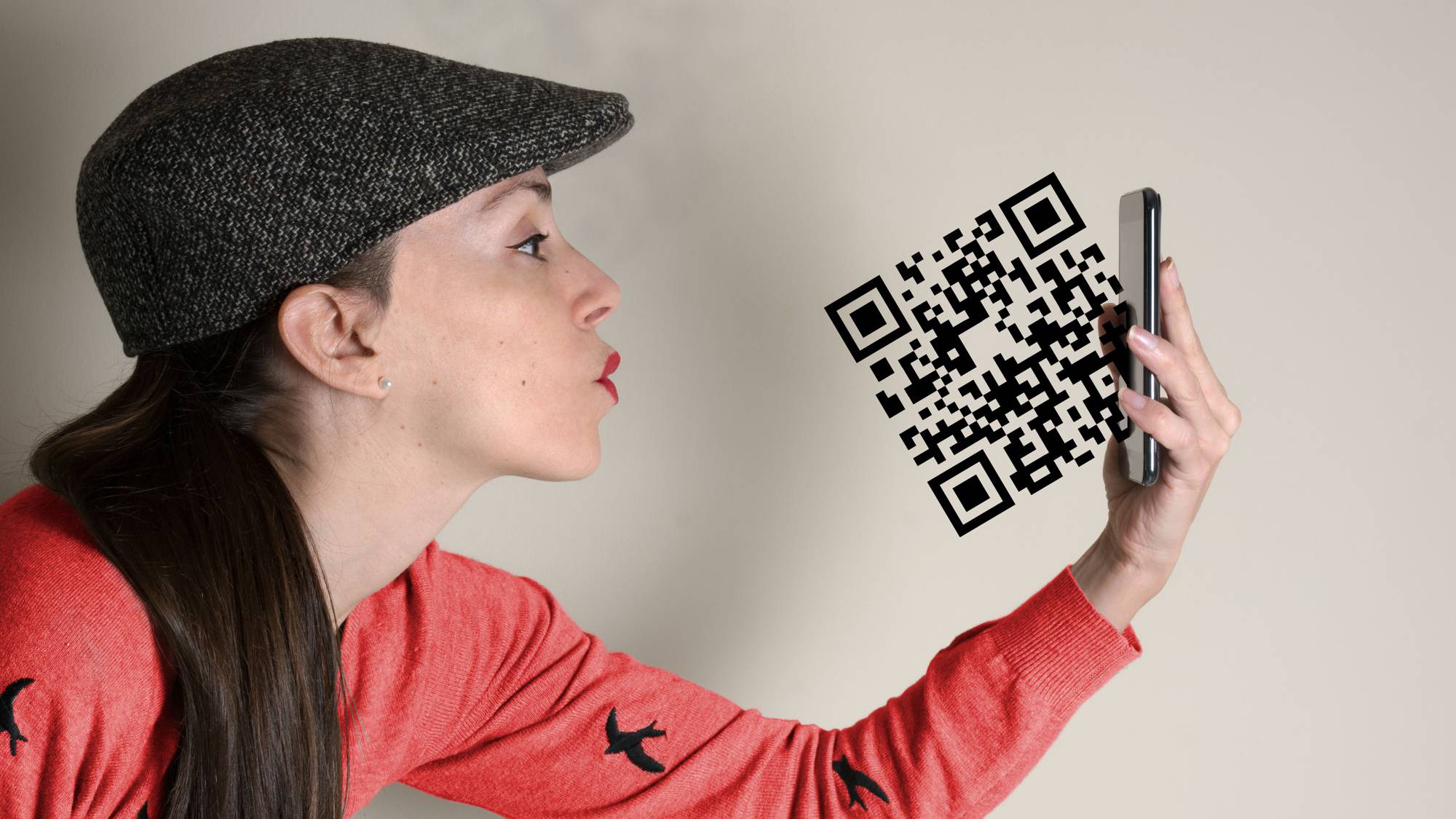All location identifiers
These are the bridges between the real world and the mobile phone.
xamoom supports all techniques to identify the user’s context – the geo-position or the proximity to an object.
None of those techniques is perfect – all of them have their specific strengths and weaknesses. But together they perform well in concert.

QR Code
A two-dimensional code that contains a URL. With QR scanner apps or the phone’s camera app, decode the URL and opens it in the browser.
Precision: a few centimeters
Strengths:
- Widely known
- Supported by the iPhone’s camera app or Google Lens (Assistant) on almost all Android phones
- No extra cost for printing
- Possibility for branding public places with smart labels
Weaknesses:
- Users often don’t know that they do not need a scanner app anymore
- Bad reputation among marketers due to terrible usage sometimes
In addition to QR codes, we support in apps many other machine-readable codes (EAN13, EAN8, UPC, Code 39, Code 93, DataMatrix, Aztec, and many more). They are used if users shall be forced to use an app or if you want to hide the content behind a code from non-authorized people (who have that can retrieve the content from our CMS).
Attention! Never place a QR code somewhere without context. This is the guarantee that no one will ever use it. Instead, always communicate a clear benefit for the user and tell him what he can expect.

NFC Tags
A tiny chip holds a URL. The phone emits a tiny amount of energy and wakes the chip up. Subsequently, it reveals its information, and the browser opens the URL.
Precision: a few millimeters
Strengths:
- Extremely easy to use: Place the phone on it
- A wow-effect at first use
- Almost all smartphones have it
- Possibility for branding public places with smart labels
Weaknesses:
- Users barely know about it
- Older iPhones (before the iPhone XS) do need an app to read NFC tags
Cost: 10 – 60 Cent per NFC tag

GPS Geofencing
A circle (“geofence”) around a point on the map. In this imaginary circle, an app displays the appropriate information. In a mobile browser, a URL (e.g. m.pingeb.org/nearby) must be opened.
Precision: ideally +/– 3 meters
Strengths:
- Free because no medium (e.g., smart label) is needed
- Easiest possible roll-out
Weaknesses:
- Works only outdoor
- A geofence is invisible

iBeacon
Small Bluetooth transmitters with a battery that constantly broadcast information that broadcast three IDs. If they fit an installed app, it can react accordingly. If there is no app, nothing happens.
Precision: various zones from 30 centimeters to 100 meters
Strengths:
- Ease of use on iPhone and Android
- Widely spread, all smartphones have Bluetooth
- Exact localization within buildings
- Low power consumption (Bluetooth Low Energy)
- Battery lasts for years
Weaknesses:
- Require a native app
Cost: depending on type 10 – 60 € per iBeacon
Every combination possible
With xamoom, every combination is possible:
- Smart labels (NFC and/or QR)
- Smart labels with GPS geofence
- only QR code, printed in a brochure or on a product package
- iBeacon with GPS geofence
- ...
Our flexible architecture allows us to react fast. Future technologies can be introduced quickly. Examples would be UWB (Ultra Wide Band), optical image recognition, text recognition, or LiFi (data through LED light).
